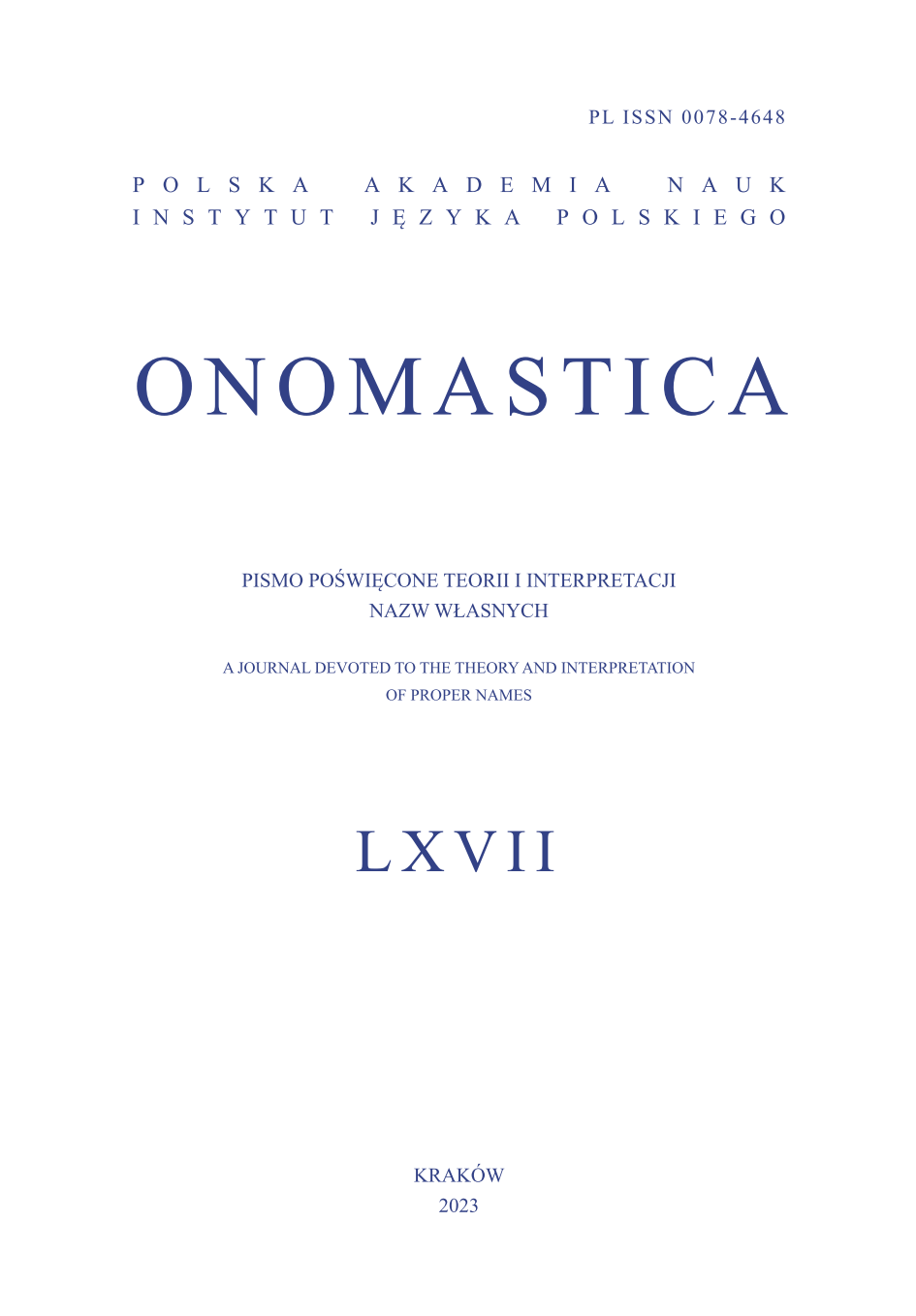Abstract
This paper aims to outline the general theory of name and naming policy (GTNP) that is developed therein. A broad GTNP design should have a constellatory structure, and its definition should take into account the variety of actors involved in designing and conducting naming policies (NPs). This paper discusses linguistic dimensions of NPs, along with possible overtness or covertness of NPs. It outlines the hierarchy of NPs and explains possible policy ranges. The GTNP is illustrated with a general model of NPs and some examples of Central-European toponymic, anthroponymic, and chrematonymic NPs.
References
Algeo, J. (1985). Is a Theory of Names Possible? Names, 33(3), 136–144. https://doi.org/10.1179/nam.1985.33.3.136
Gajda, S. (1999). Program polskiej polityki językowej (rozważania wstępne) [Programme of Polish language policy. Preliminary considerations]. In Jan Mazur (Ed.), Polska polityka językowa na przełomie tysiącleci [Polish language policy at the turn of the millennium] (pp. 37–46). Lublin: Wydawnictwo Uniwersytetu Marii Curie-Skłodowskiej.
IN1887 = Instruction für die militärische Landesaufnahme (Militär-Mappirung und Reambulierung). II. Technischer Theil [Manual for the Military Survey. Technical Part Two]. (1887). Wien: Verlag des k. k. militär-geographischen Institutes.
IN1903 = Instruction für die militärische Landesaufnahme. II. Technischer Theil [Manual for the Military Survey. Technical Part Two]. (1903). Wien: Verlag des k. u. k. Militärgeographischen Institutes.
Koegler, K. (1986). A Farewell to Arms: the ‛Greening’ of American Apartment Names. Names, 34(1), 48–61. https://doi.org/10.1179/nam.1986.34.1.48
Lubaś, W. (2009). Polityka językowa [Language policy]. Opole: Wydawnictwo Uniwersytetu Opolskiego.
Nick, I. M. (2020). Black Rising: An Editorial Note on the Increasing Popularity of a US American Racial Ethnonym. Names, 68(3), 131–140. https://doi.org/10.1080/00277738.2020.1787613
Rutkowski, M. (2001). Wstępna charakterystyka funkcji nazw własnych [Preliminary characterisation of the function of proper names]. Onomastica, 46, 7–29.
Shohamy, E. (2006). Language Policy. Hidden agendas and new approaches. London and New York: Routledge.
Sousa, S. C. T. de, Dionísio, C. I. B. (2019). Language Policy and Planning: An Analysis of the Themes Present in Research in Brazil. Revista Brasileira de Linguística Aplicada, 19(2), 265–293. https://doi.org/10.1590/1984-63982019
Włoskowicz, W. (2015a). Trójelementowy model znaczenia onimicznego i pojęciowy model onomastykonu [The triple model of onymic meaning and the conceptual model of onomasticon]. Onomastica, 59, 57–76. https://doi.org/10.17651/ONOMAST.59.3
Włoskowicz, W. (2015b). Labels on the maps of the Third Military Survey of Austria-Hungary and on the survey maps of the Military Geographical Institute (Wojskowy Instytut Geograficzny) in Warsaw in the light of survey manuals. Polish Cartographical Review, 47(1), 31–43. https://doi.org/10.1515/pcr-2015-0003
Włoskowicz, W. (2017). Functions of Geographical Names and the Use of Endo- and Exonyms. Mitteilungen der Österreichischen Geographischen Gesellschaft, 159, 323–343. https://doi.org/10.1553/moegg159s323
Włoskowicz, W. (2018). O pojęciach, systemach pojęciowych i terminologii onomastycznej [On concepts, conceptual systems and terminology of onomastics]. Onomastica, 62, 73–98. https://doi.org/10.17651/ONOMAST.62.4
Wolnicz-Pawłowska, E. (2017). Polityka nazewnicza a polityka językowa w Polsce [Name policy vs. Language policy in Poland]. Komunikacja Specjalistyczna, 13, 35–60.


